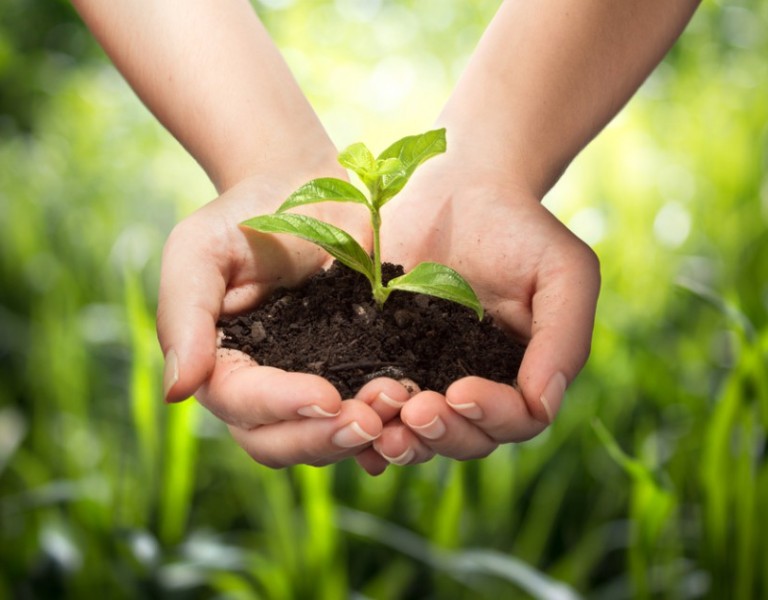ChiProPlant – Beneficial Effects
Chitosan hydrochloride enhances plant protection against pathogenic infections. It has proven effects against bacteria and fungi. But besides, there are numerous further beneficial results on plants and harvests. Dependant on application, concentration, dosage and plant species it leads to early germination of seeds, boosts germination rate, stimulates and fastens the vegetative growth, lessens the water loss of plants, increases yields. In spite of these effects ChiProPlant has no phytotoxic effects, is completely biodegradable and organic. Chitosan – Properties Chitosan is a biological polymer, which is obtained from chitin by deacetylation. Chitosan Hydrochloride is listed as “basic Substance” according to EC 1107/2009 Annex II.
ChiProPlant – Protection of Plants in Foliage Application
- Application: Chitosan is applied in the form of an aqueous solution with a final concentration of up to 0.5% when it is sprayed on to the plants and ground. Intervals between spraying are in the region of one to four weeks. The average volume per ha is about 400 l of spray mixture. There is thus a max average spray rate of 200mg/m2 of Chitosan per application.
- Action: Chitosan acts as an external elicitor which via signal transduction mechanisms stimulates defense reactions in plants to combat microbial infections. These defense reactions consist of various local and systemic mechanisms on a physiological, genetic, and biochemical level, which are complex and interconnected. These prepare the plant to defend itself against infection before it is attacked by pathogenic microorganisms.
Amongst the physiological reactions is the deposit of phenolic macromolecules (lignins) in the cell walls of the plant and the concomitant lignification of the cells, which offers enhanced protection against attacks by pests.
- In addition it is difficult for bacteria or fungi to break down lignin; it has an anti-bacterial effect and as a result inhibits the growth of pathogenic microorganisms both actively and passively.
- Up-regulation of the synthesis of the polysaccaride callose, which enables the closure of open pores and the regulation of the size of plasmodesmata. Through this the further spread of viruses via plasmodesmata can be prevented. In the case of attacks by fungal hyphae or wounds, callose is synthesized quickly by the plant as the first physical barrier (papillae) to close the wound. In this way the pathogen can be prevented from entering the plant, or at least should be slowed down or demobilized.
- The period of time during which the stomata are open is reduced, without the gas exchange necessary for photosynthesis being negatively affected.
Biochemical and genetic reaction:
- Very soon after stimulation changes such as membrane depolarisation and changes in the flow of ions over the membrane, increase in the cytosolic Ca2+ level, protein phosphorylations and inhibition of the membrane-bound ATPase take place. These processes have to be seen in connection with signal transduction mechanisms and they lead to a multitude of local and systemic defense reactions. Amongst these are the local production of phytoalexins, which have an antimicrobial effect and which inhibit the growth and spread of pathogenic microorganisms.
- Further secondary plant metabolites are produced in multitudes. Different compounds from diverse classes occur of substances such as flavonoids, terpenoids, alkaloids, stilbenoids, polyacetylenes, isoflavones, etc. these again are Triggers for the synthesis of phytoalexins, plant hormones which are also responsible for a number of further defense mechanisms.
- "Oxidative burst" which is initiated and supported by ChitoPlant: This is to say the production of radical and reactive oxygen species, such as hydroxyl radicals and hydrogen peroxide, which act against pathogenic microorganisms through their cytotoxic properties.
- Another important effect of the "oxidative burst", which is induced by Poly-D-Glucosamine Hydrochloride (Chitosan) together with the above-mentioned changes in the flow of ions across the membrane, is the release of the so-called hypersensitive reaction (HR). This prevents the growth and spread of pathogens from the infection area into other parts of the plant. HR is an important trigger for so-called "systemic acquired resistance" (SAR), a system of non-specific defense mechanisms.
- In addition to its eliciting effect Chitosan can also act as an anti-microbial agent, both against plant pathogenic fungi and against bacteria.
ChiProPlant® also has a stimulating effect as a biogenic polysaccharide on beneficial microorganisms in the soil. Beneficial organisms such as Bacillus, Pseudomonas, mycorrhiza, and rhizobacteria are not negatively affected, but encouraged, and because of this the microbiological balance in the rhizosphere is altered to the disadvantage of soil-borne pathogens.
Application and effects of ChiProPlant in the dressing of seeds and seed stock by treating seeds with Chitosan before sowing
- A much higher rate of germination
- Earlier emergence of seedlings with increased length of root and shoots and increased dry weight
- Increased tolerance of stress conditions and greater resistance to infestations
Application and effects of ChiProPlant® in managing Water Resources
By reducing the period of time during which the stomata are open (see above) the plant’s transpiration and its water requirements are reduced, without the gas being negatively affected. This offers the possibility of using the important resource that water represents more sparingly in agriculture whilst retaining biomass production and yield.


